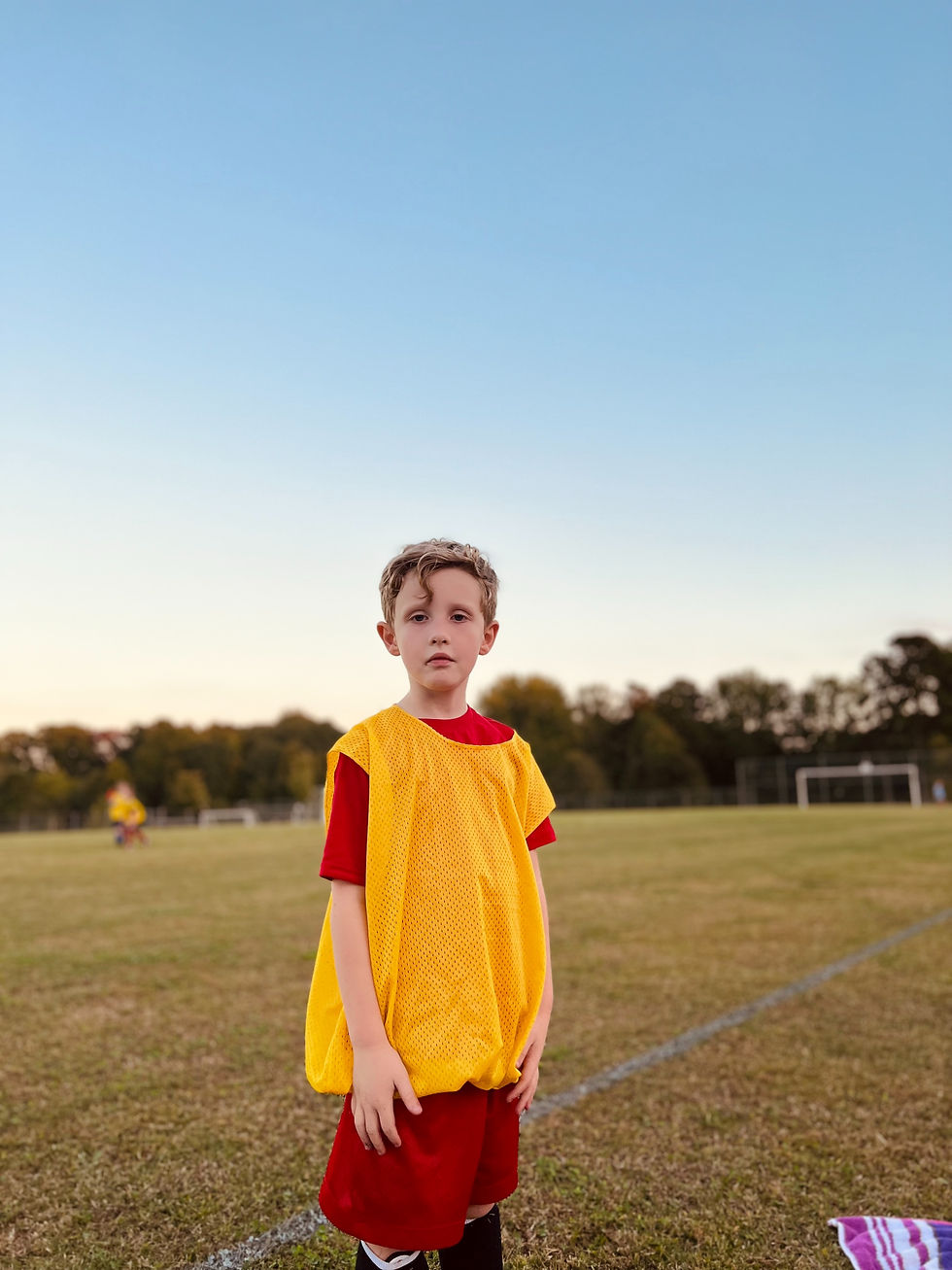Fall Sports & Foot Health: What Parents Need to Know
- rakiddypodiatry
- Sep 23
- 4 min read

As fall arrives in the Tri-Cities, kids across Kennewick, Richland, and Pasco lace up their cleats and hit the field for football, soccer, cross-country, and other school sports. But as the weather cools and activity increases, so does the risk of foot-related injuries and infections — especially in children whose feet are still growing and developing.
At Kiddy Foot & Ankle Group, Dr. Kiddy sees a sharp uptick in young patients every fall, not just from twisted ankles and sports sprains, but also from fungal infections, slow-healing wounds, and complications that could’ve been prevented with the proper care.
Here’s what every parent should know about protecting their child’s feet this fall, whether they’re a weekend warrior or a student-athlete.
Fall Sports = Higher Risk for Foot & Ankle Injuries
Fall sports often involve high-impact movement, sudden changes in direction, and long practices — all of which put extra stress on growing bones and joints.
The most common sports-related injuries we see in young athletes include:
Common Fall Sports Injuries:
Ankle sprains: Caused by rolling or twisting the ankle. Often overlooked or “walked off,” but untreated sprains can lead to chronic instability.
Heel pain (Sever’s disease): A common growth plate injury in kids ages 8–14, especially those involved in running or jumping sports.
Stress fractures: Micro-cracks in the bones of the foot, often due to overuse or worn-down shoes.
Turf toe: A sprain of the big toe joint, common in football or soccer players who play on artificial turf.
Warning Signs:
Limping or walking on toes
Complaints of pain after practice
Redness, swelling, or warmth near the ankle or heel
Refusing to participate in sports or activities they usually enjoy
Tip: Don’t ignore complaints of pain — even minor symptoms could be signs of a deeper issue. Early treatment can prevent long-term damage and get your child back in the game faster.
2. Proper Footwear Makes All the Difference
Foot pain in children is often linked to improper footwear — either worn-out athletic shoes, poorly fitting cleats, or flat, unsupportive sneakers.
When shopping for fall sports gear:
Measure both feet and check for fit every 2–3 months — kids grow fast!
Look for sport-specific shoes (running shoes are not the same as soccer cleats).
Avoid hand-me-down cleats, which can wear unevenly and cause joint strain.
Add custom orthotics if your child has flat feet, heel pain, or fatigue during games.
Bonus: A good fit not only prevents injury — it boosts performance and confidence, too.
3. Fungus Thrives in Locker Rooms and Tight Cleats
As practices shift indoors or onto damp turf, and kids spend more time in locker rooms and showers, fall becomes the prime season for foot fungus.
Common Fall Fungal Infections:
Athlete’s foot: Red, itchy, peeling skin between the toes or on the soles.
Toenail fungus: Thick, yellowing, brittle nails. Often slow to show but stubborn to treat.
Plantar warts: Viral skin infection, often confused with calluses. These can be painful and contagious.
Prevention Tips:
Change out of sweaty socks and cleats immediately after practice.
Use flip-flops or sandals in locker rooms and public showers.
Never share socks, shoes, or towels.
Use an antifungal powder or spray if your child is prone to sweaty feet.
If you notice signs of infection, don’t wait — fungal conditions are easier to treat early. Dr. Kiddy offers fast, non-invasive treatment options that are safe for kids.
4. Minor Wounds Can Become Major Problems
Scrapes, blisters, and turf burns are common during sports, especially on the feet. While most seem minor, they can become serious if not properly cleaned and protected — particularly for kids with underlying conditions like diabetes or immune disorders.
When to Worry:
Blisters that become red, swollen, or filled with pus
Cuts that don’t heal within 7–10 days
Sores on pressure points like the heel, ball of foot, or toe tips
Persistent foot odor, drainage, or discoloration
Left untreated, these wounds can develop into infections, abscesses, or even ulcers. In rare cases, surgical treatment may be needed — but most wounds can be treated easily if caught early.
At Kiddy Foot & Ankle Group, we offer advanced pediatric wound care, including safe debridement, antibiotic treatments, and personalized prevention plans to keep your child’s feet safe and healthy.
5. Growing Feet Need Specialized Care
One of the most important things to remember: Children’s feet are not just small adult feet. They are constantly growing, shifting, and developing — and that makes them more prone to alignment issues, flat feet, and injuries that can impact their long-term development.
Dr. Kiddy takes a whole-child approach to foot care:
Checking for proper arch development
Screening for early signs of deformity or overuse
Addressing gait or balance issues
Offering non-invasive treatment options designed for kids
If your child frequently complains of foot pain, seems clumsy or avoids activity, a quick foot checkup can reveal a lot.
Foot pain, sports injuries, and fungal infections may seem like small problems — but they can snowball into major setbacks if ignored. By addressing these issues early, you give your child the best chance to stay active, pain-free, and confident throughout the school year.

Comments